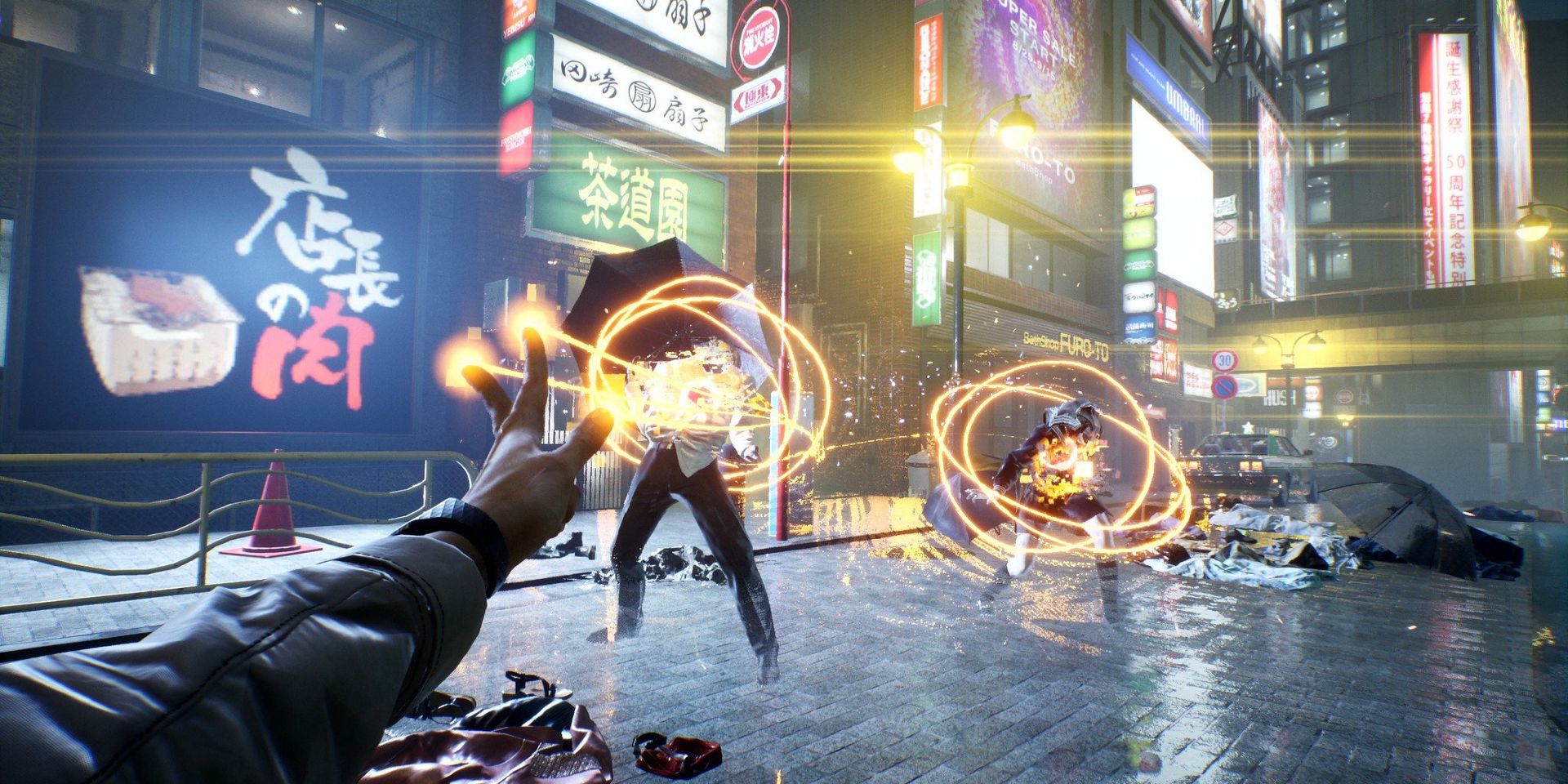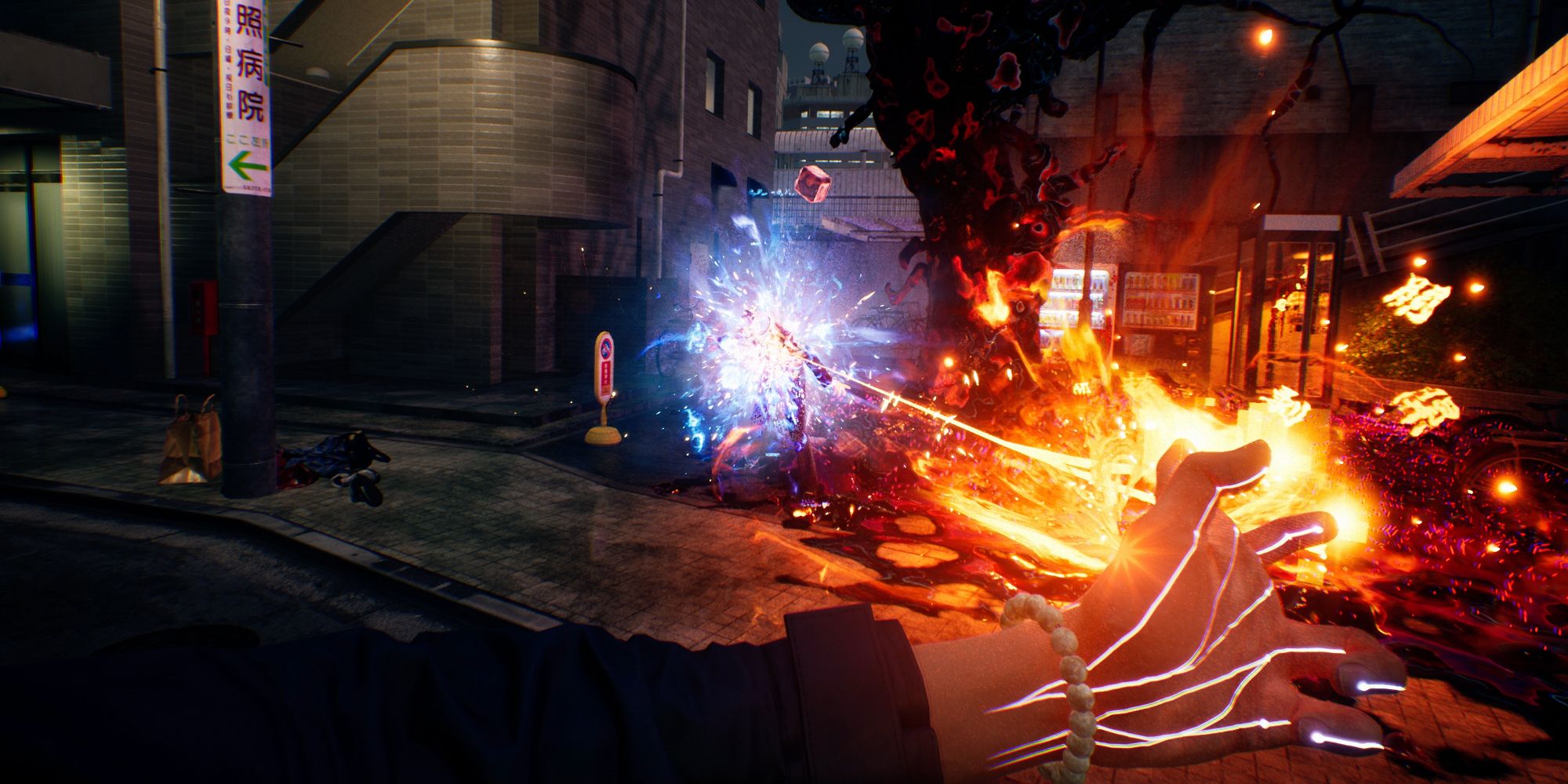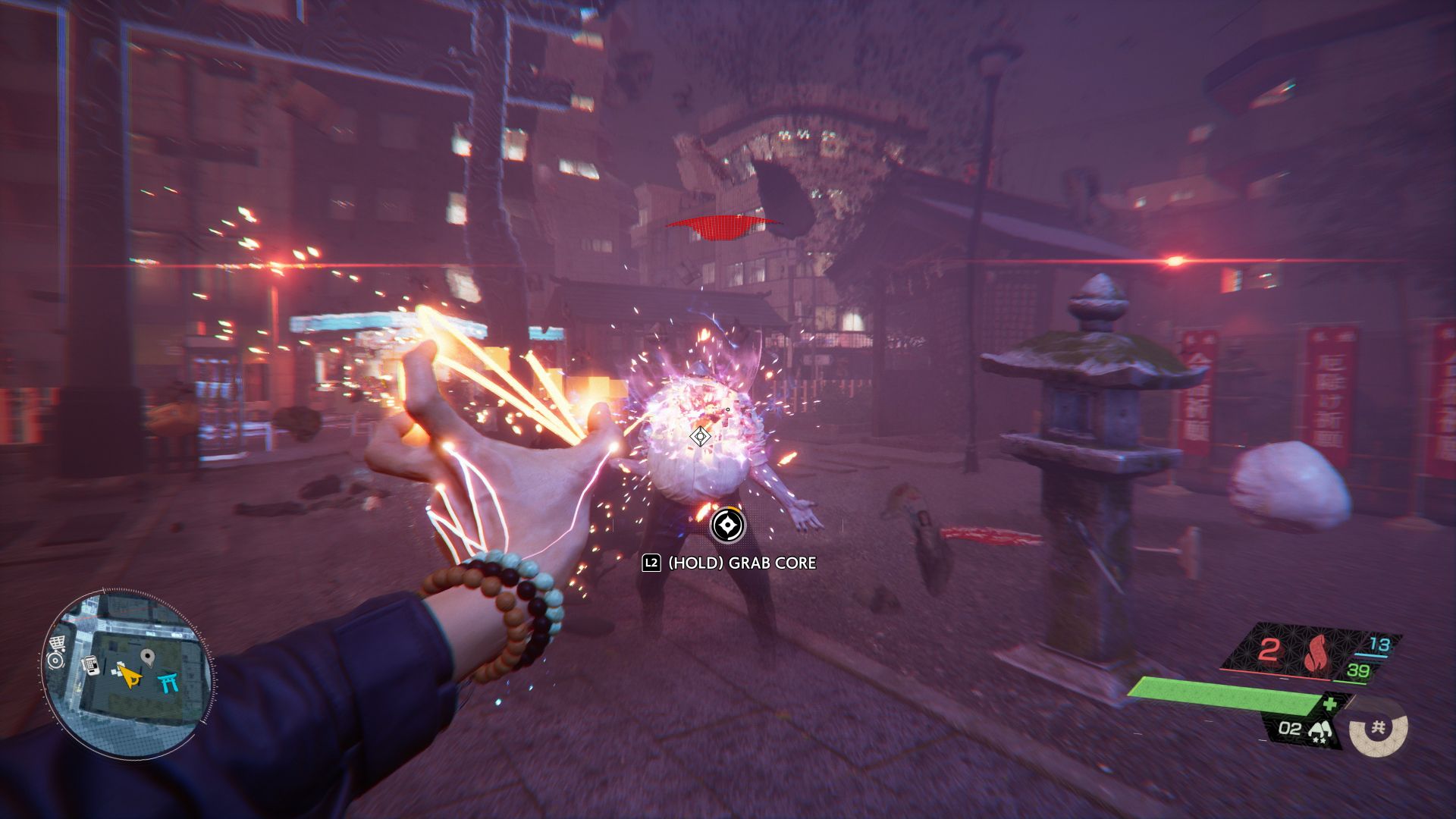Most modern first-person shooter video games - Call Of Duty, DOOM, and Far Cry - take place in a military or science fiction setting, but the upcoming Ghostwire: Tokyo, developed by Tango Gameworks, instead couches its FPS gameplay in a world of supernatural horror, with the protagonist using supernatural powers to exorcize the ghosts, Yokai, and urban legends infesting downtown Tokyo. The occult, supernatural themes of Ghostwire: Tokyo and its use of elemental spells and magical talismans in place of guns led to a style of play distinct from other contemporary FPS games. Rather than seeking points of cover or running and gunning, players instead banish monsters using stealth, exploiting the properties of certain elemental attacks, and countering enemy attacks with well-timed blocks.
In the opening of Ghostwire: Tokyo, an eerie sorcerer wearing a traditional Hannya mask unleashes a supernatural fog upon the Shibuya Ward of modern-day Tokyo that causes all the human locals to vanish. In the place of the raptured humans, strange creatures modeled after traditional Japanese Yokai and modern urban legends in Ghostwire haunt Shibuya's streets: umbrella-toting boogeymen with the faceless heads of the Slender Man, Kuchisake-onna ghost-women, bloody mouths behind surgical masks, and so on. The protagonist of Ghostwire: Tokyo, a Shibuya resident named Akito, fuses with a mysterious spirit called KK, using the specter's elemental powers to search for his missing sisters and take back Shibuya from the Hannya mask-wearing sorcerer and their monstrous minions.
The settings seen in gameplay footage for Ghostwire: Tokyo blend modern and mystic elements in several ways. Traditional folkloric Japanese Yokai spirits and monsters such as Tengu or Kappa roam between the sleek skyscrapers of Ghostwire: Tokyo's open world and splash through the pools within shopping centers. The game's protagonist uses traditional Kuji-kiri hand seals and paper talismans to smite his supernatural foes while purifying corrupted Torii gates, but also binds spirits into pay-phones and rides enchanted motorcycles into battle. The post-modern urban fantasy aesthetic of Ghostwire: Tokyo, as conceived by Tango Gameworks, may well have led to the creation of combat/exploration mechanics that are less frantically paced and more tactical than those in other FPS games.
Ghostwire: Tokyo's Gameplay Is Slower-Paced Than Most FPS Games
More than ever, modern warfare in the real world is a brutal churn of movement and concealment. A soldier on the battlefield who's out in the open and standing still can easily be riddled with bullets or blown up by artillery, forcing them to either dash around or stay behind cover. This warfare paradigm of don't be seen and don't be caught has bled into the stylized combat of FPS games such as Gears of War, Battlefield, or Call of Duty: Modern Warfare, which place a heavy emphasis on always moving, avoiding open fields of view, and shooting enemies the moment they become visible.
The player character, rather than being a soldier, is a hardboiled exorcist who wields formidable mystic and even Spider-Man-like power in Ghostwire: Tokyo, a video game protagonist who turns the tables on supernatural predators and hunts them instead. This theme of hunting the hunters is strengthened by combat gameplay mechanics that put more emphasis on stealth, ambushes, and face-to-face confrontations; there also doesn't seem to be a dash or sprint mechanic in any of the Ghostwire: Tokyo gameplay footage, incentivizing players to plan their battles carefully and stand their ground against enemy attacks with a special block move.
Ghostwire: Tokyo's Gameplay Rewards Careful Choice
Akito, the protagonist of Ghostwire: Tokyo, doesn't carry traditional FPS weapons like assault rifles, handguns, sniper rifles, or shotguns. Instead, Akito (and the player of Ghostwire: Tokyo) wields a small library of offensive magical spells corresponding to the classical elements (Water, Fire, Wind, etc.) along with an enchanted bow for long-range combat and grenade-adjacent objects such as paper talismans. Each elemental spell also has different properties suited for different attacks; wind spell projectiles seek out individual targets, fire spells create area-of-effect explosions, etc. Consequentially, Ghostwire: Tokyo rewards players for constantly switching between different weapons, spells, and tools on the fly depending on whether they're attacking groups of weak foes, strong individual foes, or enemies that haven't been alerted yet.



